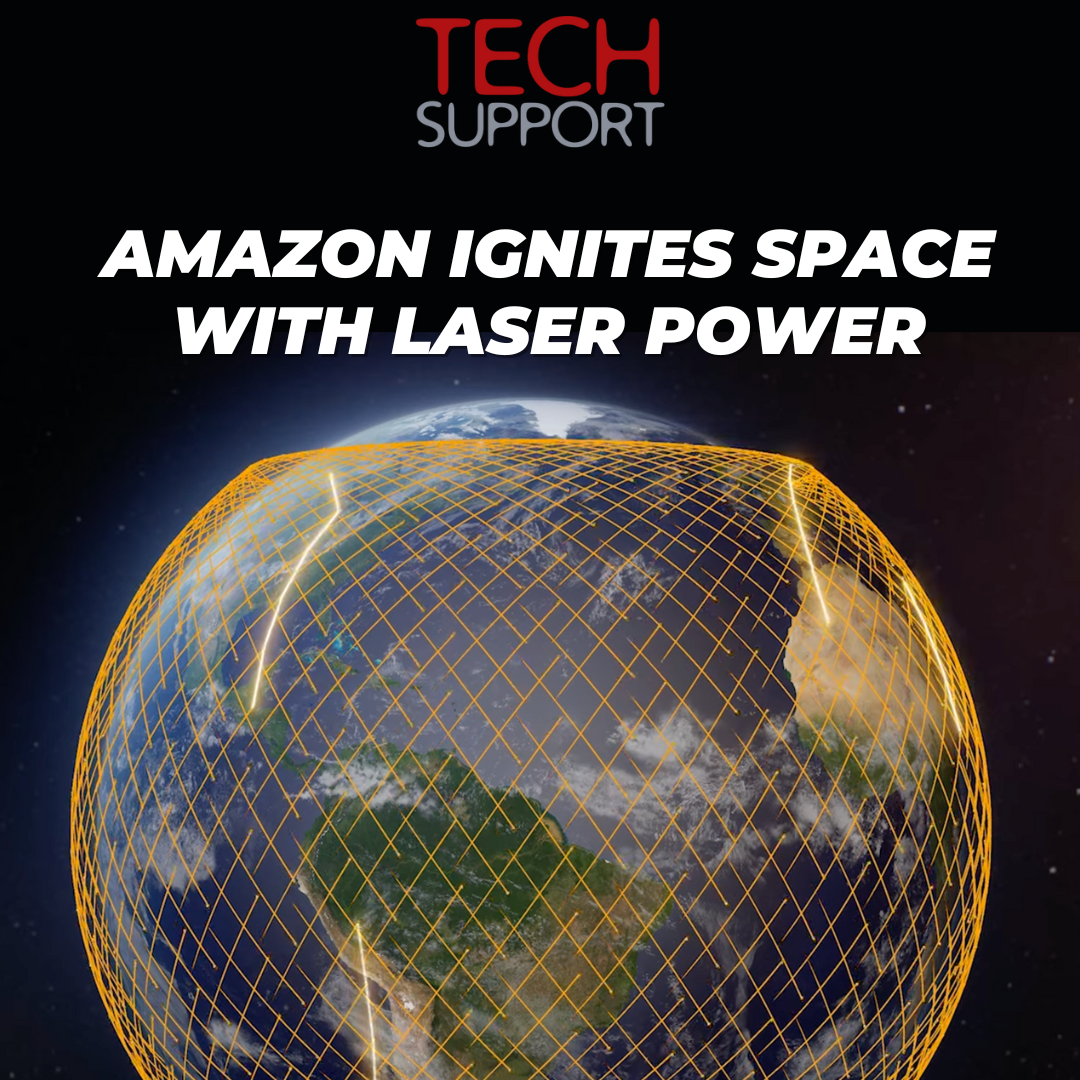
Amazon Ignites Space with Laser Power
In a cosmic clash of titans, Amazon has unveiled its space laser technology, demonstrating a data transfer rate of 100 gigabits per second over nearly 1000 kilometers between prototype internet satellites. These lasers, integrated into Amazon's upcoming 3236 Project Kuiper satellites, aim to create a global high-speed mesh network for efficient data routing.
Not to be outdone, SpaceX's Starlink, boasting over 1.5 million customers, claims to deploy more than 8,000 space lasers on its latest satellite generation. The competition is fierce to establish the first complete optical inter-satellite link (OISL) constellation, rivaling terrestrial 5G and fiber networks in cost-effectiveness.
Laser advantages in space are clear — higher frequency, increased bandwidth, tighter beam focus for enhanced security, and reduced power requirements. OISL satellites in low earth orbit promise improved global coverage, especially in remote areas lacking ground stations. The speed of light in a vacuum also allows for quicker connections between distant locations compared to traditional undersea cables.
However, challenges abound. Precise laser communication across vast distances amid fast-moving satellites and potential signal obstruction by clouds pose significant hurdles. Moreover, laser terminals remain more expensive than traditional radio transceivers.
Despite these challenges, OISL technologies are making strides, with major players like Amazon and SpaceX leading the charge. Other contenders, including Telesat, GuoWang, and Kepler, are also joining the race to establish communication constellations.
While these constellations hold promise for global internet access, secure military communications, and vessel tracking, interoperability remains a concern. Proprietary technologies in Amazon's and SpaceX's constellations hinder direct connections from satellites operated by other entities.
The U.S. Space Development Agency (SDA) has set standards for laser terminals, but Amazon's Kuiper network won't adhere to them. The industry grapples with evolving standards to ensure interoperability for scheduling, transferring, and routing data among diverse satellite networks.
MIT professor Kerri Cahoy envisions a future where on-orbit network connections enable increased autonomy for satellites, potentially tracking shipments, overseeing mining operations, and facilitating permanently-connected autonomous vehicles. However, challenges persist as the industry navigates the exciting yet complex frontier of space-based internet infrastructure.
Project Kuiper aims for a full-scale deployment by the first half of 2024, anticipating early customer pilots in the latter part of the year. As the space laser saga unfolds, the world watches to see which company will pioneer the next era of high-speed satellite communication.